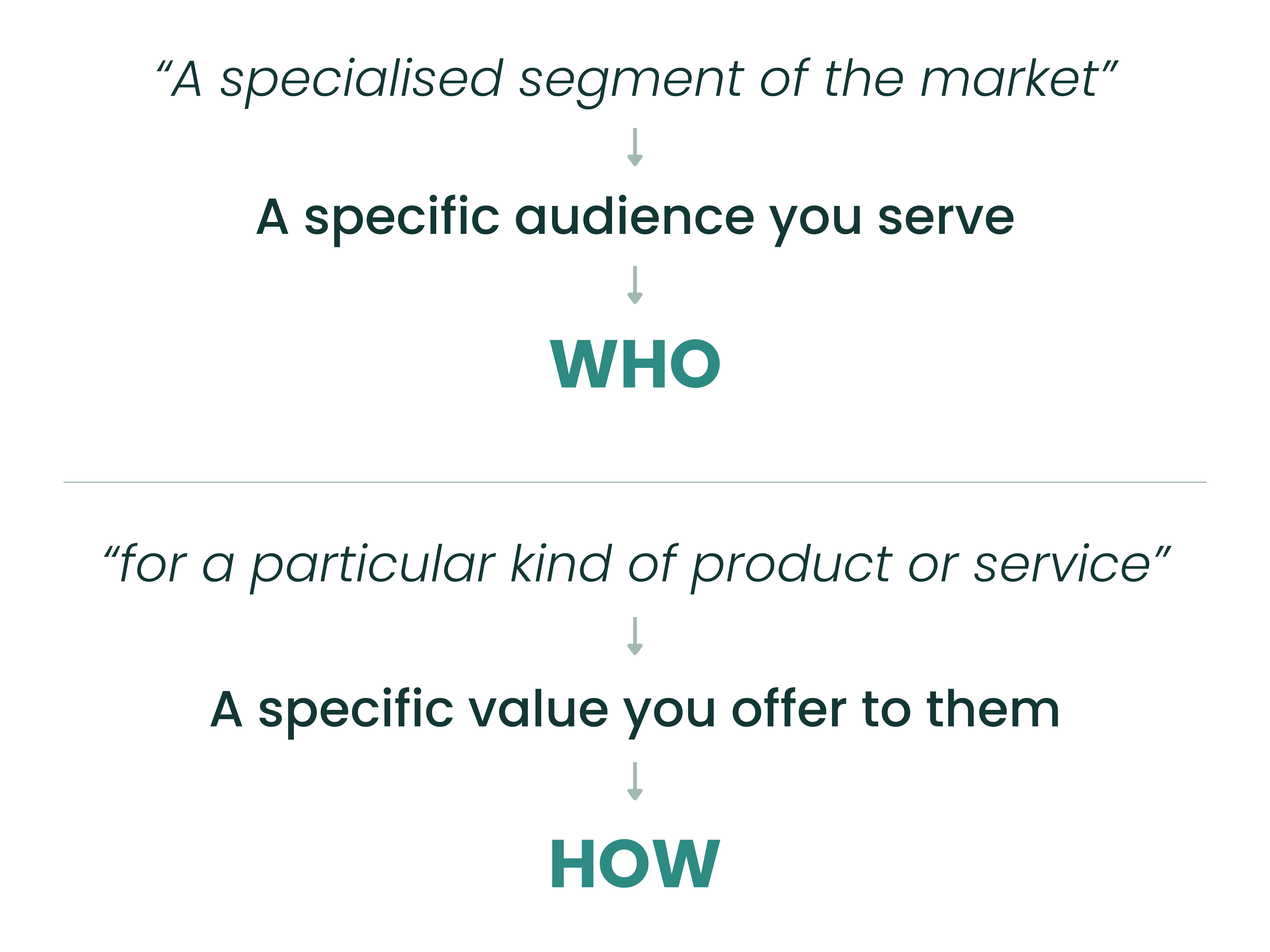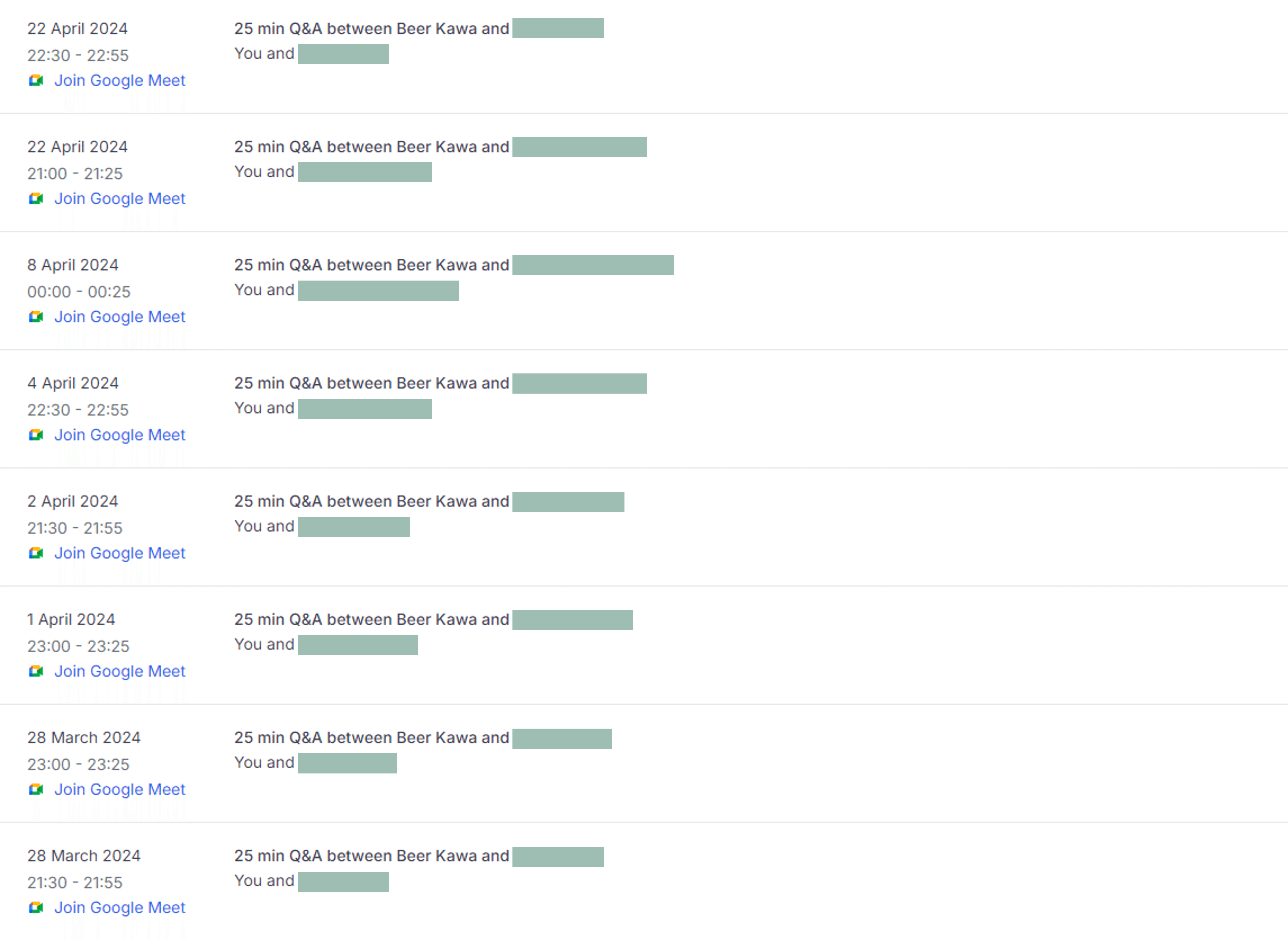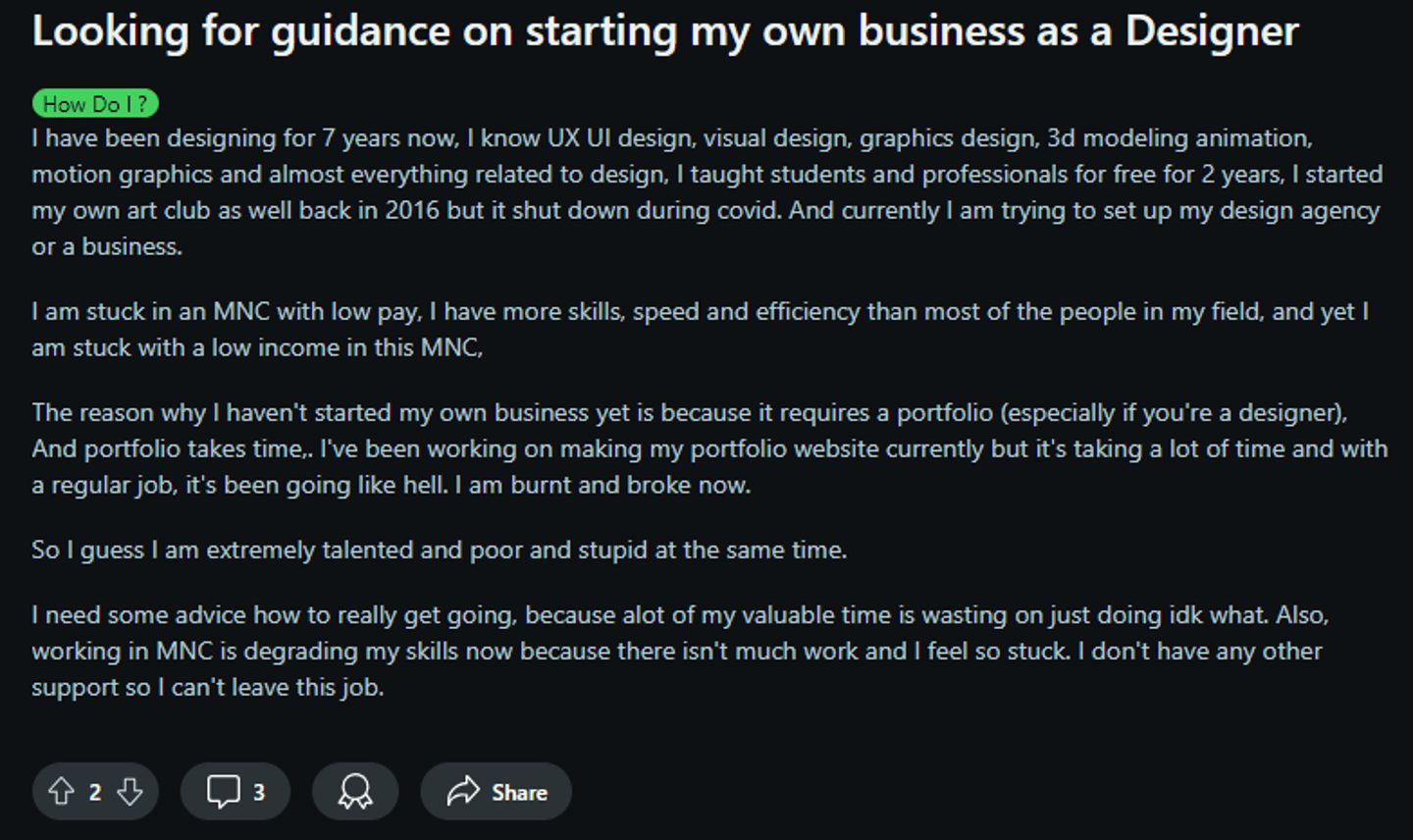Who to serve?
CHAPTERS
Since the beginning of my journey, I’ve done 33 consulting calls with first-timers to help them get started in the online business space.
At first, it looked like everyone was struggling with many different problems. But when I dug deeper into the root cause, it all came down to one thing:
The lack of clarity on their niche.
When this isn’t clear, you risk wasting your time building the wrong things and creating content that doesn’t align:
Your direction is not there
Your positioning is not there
Your overall progress is not there
You end up going in circles. I’ve been there before and it was demotivating.
That’s why it’s important to take your time to think through this as much as possible right from the beginning to save yourself a huge amount of time
Before moving on, let’s go over the definition of a niche first.
Understand what a niche (really) is
The term “niche” has been thrown around everywhere in the online business space. People have been using it in many different ways to the point that it created confusion. Therefore, it’s best that we’re on the same page here.
First of all, a niche is NOT:
Content topic you post (e.g., writing, productivity, fitness)
Audience type you target (e.g., creators, founders, executives)
In fact, here’s its definition from the Oxford English Dictionary:
“A specialised segment of the market for a particular kind of product or service.”
Let me break it down into two parts so it’s clearer:

A niche is simply WHO you serve plus HOW you offer them value.
Not just one or the other, but both.
For the purpose of this chapter, I’ll focus on the WHO part first.
Define your audience first
The very first step of your journey is to get clear on who you want to serve.
It could be tempting to start by coming up with a few product ideas right away. But this is a risky approach.
Why?
You’re simply playing the guessing game here.
How can you know that there’ll be a demand for what you build?
The answer is you don’t.
Instead, start with the people first.
That’s because you can identify them, get to know them, and understand what they actually want so you can build something you know for sure they actually use.
So who’s your audience then?
The right audience for you is the people you already know very well.
Does this ring a bell?
If you already have a specific group of people in mind after reading the sentence above then you’re good to go.
If you still can’t think of any (just like me when I first started), that’s OK too. But one thing though, I’m pretty sure you already know a lot about yourself, right?
So I’d suggest you start with “people like you” first.
Think about:
What problem have you solved so far?
What end result have you accomplished so far?
Focus on serving the people who want to achieve the same transformation as your past self.
As a first-time solopreneur, it’ll be easier for you to start by serving those you’re already familiar with and are also a few steps behind. You’ve been through the exact path they want to take before.
And that’s the right audience for you to start with.
Here’s a quick checklist to help you finalise your choice:
Are they hanging out somewhere online?
Are they willing to spend money to solve their problems?
Are they like you? (you have prior knowledge on what they want to achieve)
Make sure you can answer “Yes” to all of these before you move on.
Another important thing to keep in mind is that you’re never married to just one type of audience.
What you choose now doesn’t have to be what you stick with forever, what you choose now is simply what you’ll be starting with.
This is not a lifetime decision.
Now, I don’t want to leave you hanging without showing how everything actually works. So from here on, I’ll walk you through with an example that follows through with every step of this guide.
Example
Let’s say I’m a graphic designer who has left the corporate world and has started my online business.
Here’s the right audience for me to start with:
“Graphic designers who are currently trying to transition from a 9-5 job into entrepreneurship.”
Meet them where they gather naturally
Now that you have a clear picture of who to serve, the next step is to meet them.
But where can you find them?
At watering holes.
This is an analogy that’s derived from a land area filled with water where wildlife always gathers around in nature. These animals are all here with a shared purpose.
The need for water.
The same thing happens when it comes to your audience. You can find them across “online watering holes” where they also gather with a common goal.
The need for answers to specific problems.
These are places where they naturally hang out, consume information, share thoughts, and most importantly discuss.
Some examples for you to explore:
Social media comments and groups
Forums
Blog comments
Communities
Events
Meetups
Workshops
X spaces
Here are a few tips to help you discover the right online watering holes for your audience:
Look for places where you already hang out regularly
Look for large accounts in the same niche that they follow
Look for alternative ways your audience describes themselves
It’s totally normal if you can’t find these places right away. But don’t give up after your first few attempts.
Keep digging.
Every attempt you make will get you one step closer to understanding your audience.
Example
Following the previous example, I’ve decided to pick Reddit as my first online watering hole to meet my audience.
Here are a few communities I’d start browsing inside the forum:
Research their behaviour
Once you’ve joined these online watering holes, the rest is all about researching the behaviour of your audience.
Your goal is to understand more deeply about what they actually want so you can build something they actually use.
On your first instinct, the most obvious way might be to get on 1:1 calls with your audience.
You’re right, that was the exact approach I took to understand what problems they have. I spent hours reaching out to selected individuals in my audience, scheduling calls with them, and interviewing 62 people one by one with questions I prepared.

Although this approach got me data points to work with, there were two problems.
First, it wasn’t scalable at all. This was pretty obvious since I could only talk to so many people within a given amount of time.
Second, the insights I got weren’t always accurate. The people I interviewed were actually prompted to answer my questions instead of expressing themselves naturally. It was a forced interaction.
This approach is simply not good enough when it comes to researching your audience. The feedback loop needs to be faster and more reliable.
A better approach would be to lurk and observe intentionally.
Yes, you heard me correctly.
The key is to observe what’s being said, discussed, and shared. Without judging. Put yourself in their shoes and focus on them. Hence, the emphasis on “intentionally”. This way, you’ll get real insights into how they actually behave under natural circumstances without feeling exhausted.
Here are the two things to look out for during your research:
Problem (most likely from someone who started a discussion)
Challenge
Complaint
Failure
Fear
Inability
Struggle
Uncertainty
End result (including suggestions from someone else)
Achievement
Desire
Dream
Goal
Recommendation
Want
Wish
From my experience, you’re likely to uncover more problems than end results. That’s normal. When someone feels stuck, it can be difficult to express clearly what they actually want to achieve since they’re so focused on their problems.
Don’t worry too much about this. If you need more insights on end results, you still have the option of flipping the problems you found the other way around.
Make sure to note down both their problems and end results while doing your research. You’re going to need these insights for the next chapter.
Example
Once inside, I’ve come across this post which looks like a good starting point to research my audience.

Here’s everything I’ve noted down after reading through the post in detail (including the comments) from top to bottom:
Problem
“I am stuck in an MNC with low pay”
“it requires a portfolio…portfolio takes time”
“with a regular job, it's been going like hell”
“my valuable time is wasting on just doing idk what”
“you…are unsure how to take the next steps”
“it feels like a daunting task”
“my action plan is not very clear and to the point”
End result
“Looking for guidance on starting my own business”
“I am trying to set up my design agency or a business”
“I need some advice how to really get going”
“Consider creating a minimum viable portfolio”
“Think about time management”
“Share your journey”
“Offer your services on freelance platforms”
Note that this is an example of insights from just one source. When you’re working on this step, it’s better to research across multiple sources so your insights are as accurate as possible.
The more time you spend on this, the more data you collect, the better understanding you have of your audience.
But don’t forget to give yourself a deadline too. A cut-off point once you’ve collected just enough insights to work with and move forward.
The last thing you want is to keep researching forever without getting anywhere.
PREVIOUS
NEXT
Found this guide valuable?
Leave your testimonial here.
